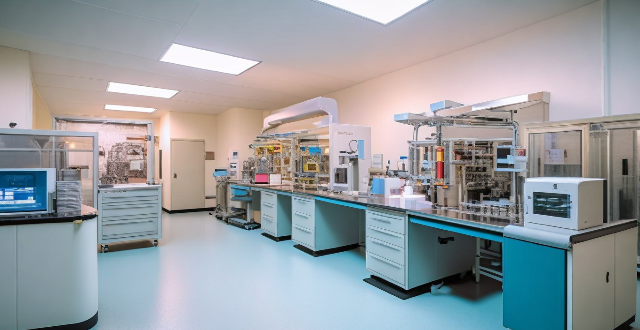Ensuring biosafety compliance in laboratories and research facilities is crucial for the protection of personnel, the environment, and research subjects. Measures such as regular training sessions, competency assessments, clear policies and procedures, proper use of personal protective equipment (PPE), effective waste management, and well-developed emergency response plans should be implemented to create a safe working environment.

Biosafety Compliance in Laboratories and Research Facilities
Ensuring compliance with biosafety policies is crucial for the protection of personnel, the environment, and the research subjects. Here are some measures that can be taken to ensure biosafety compliance:
1. Training and Education
- Regular Training Sessions: All personnel should undergo regular training sessions on biosafety protocols and procedures. These sessions should cover topics such as hazardous materials handling, waste disposal, emergency response procedures, and personal protective equipment (PPE) usage.
- Competency Assessments: Regular assessments should be conducted to ensure that personnel understand and can apply the biosafety protocols effectively. This will help identify any gaps in knowledge or practice.
2. Clear Policies and Procedures
- Written Policies: Clearly written biosafety policies and procedures should be available for all personnel to refer to. These policies should outline the responsibilities of each individual and the consequences of non-compliance.
- Access Control: Access to high-risk areas should be restricted to authorized personnel only. This can be achieved through the use of security cards, passwords, or other access control mechanisms.
3. Personal Protective Equipment (PPE)
- Availability: Sufficient quantities of appropriate PPE should be readily available at all times. This includes items such as gloves, goggles, face shields, lab coats, and respirators.
- Proper Use: Personnel should be trained on the proper use of PPE and its importance in preventing exposure to hazardous materials. Regular inspections should be conducted to ensure that PPE is being used correctly.
4. Waste Management
- Proper Disposal: Hazardous waste should be disposed of according to established protocols. This includes separating different types of waste and using appropriate containers for disposal.
- Regular Inspections: Regular inspections should be conducted to ensure that waste is being disposed of properly and that there are no leaks or spills that could pose a risk to personnel or the environment.
5. Emergency Response Plans
- Development: A comprehensive emergency response plan should be developed and regularly updated to address potential incidents such as spills, leaks, or exposure incidents.
- Drills: Regular drills should be conducted to ensure that personnel are familiar with the emergency response plan and can respond quickly and effectively in case of an emergency.
In conclusion, ensuring biosafety compliance requires a combination of training, clear policies and procedures, proper use of PPE, effective waste management, and well-developed emergency response plans. By implementing these measures, laboratories and research facilities can create a safe working environment for all personnel while protecting the integrity of their research.